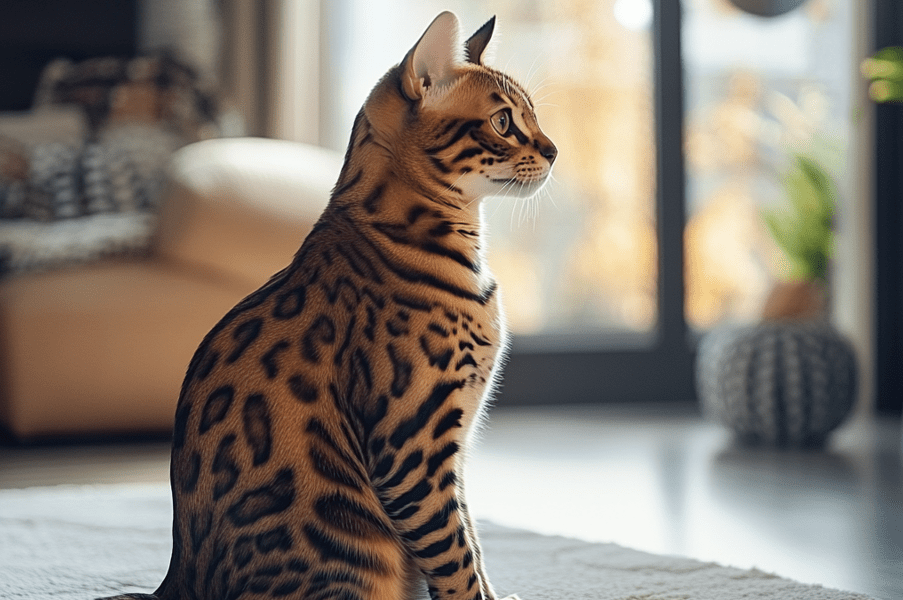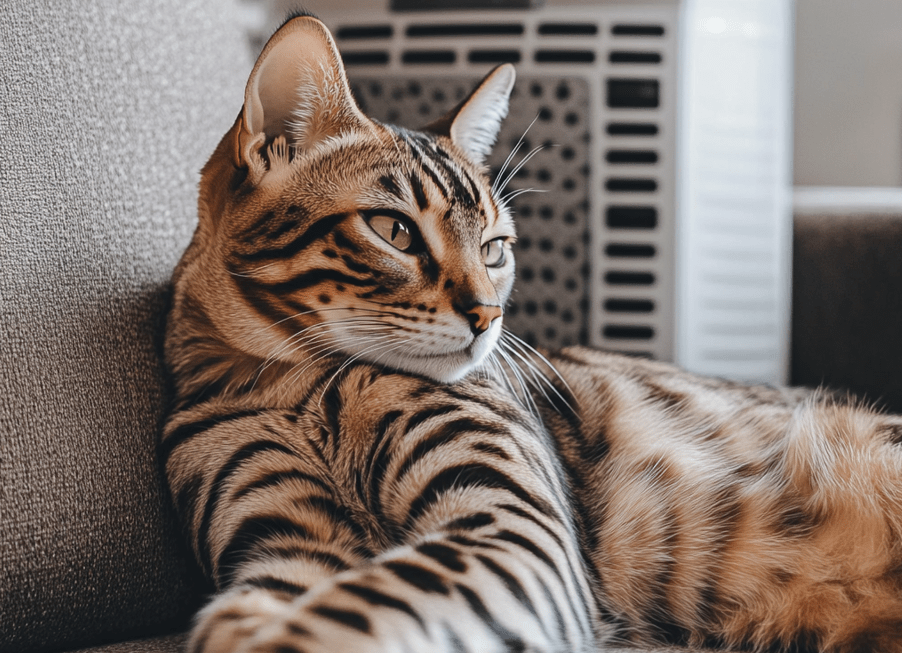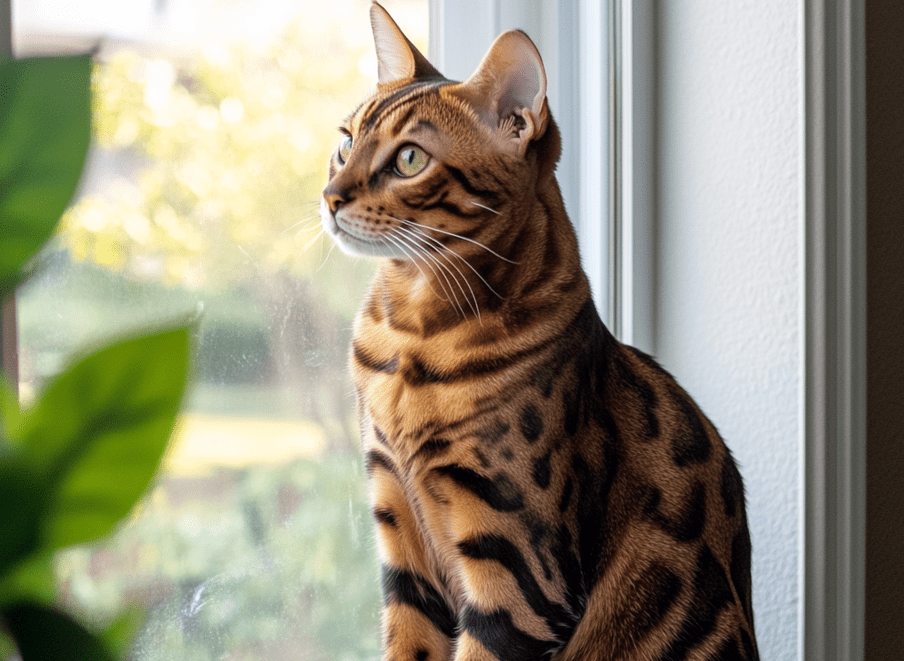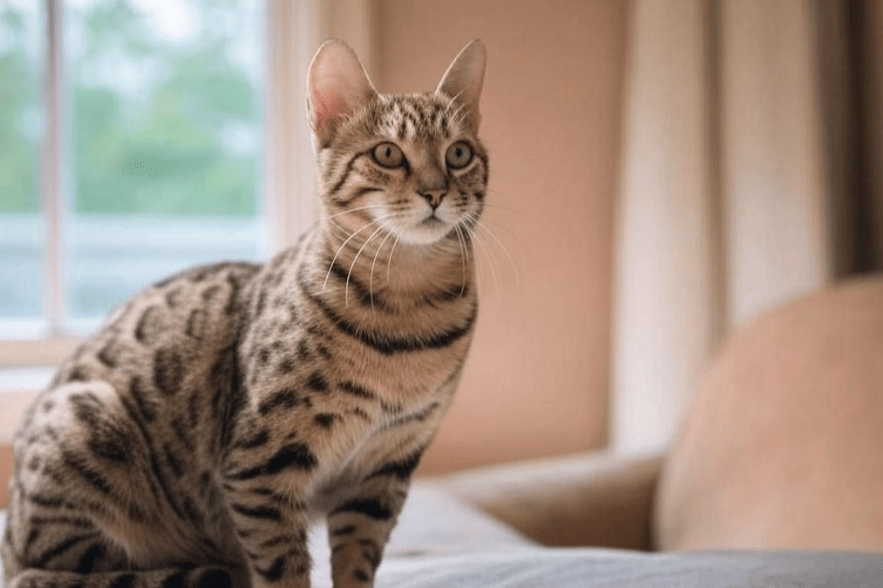
Bengal cats are known for their sleek, muscular bodies and vibrant, spotted coats, resembling their wild ancestors. These energetic and playful felines often capture the hearts of cat owners with their unique personalities. However, if you’ve noticed your Bengal cat losing weight unexpectedly, it can be a cause for concern. Weight loss in Bengal cats may signal an underlying health issue, a change in diet, or even stress. This comprehensive guide explores the reasons behind weight loss in Bengal cats, when to worry, and actionable steps to ensure your cat stays healthy.
Understanding Weight Loss in Bengal Cats
Weight loss in cats, including Bengals, is not always a bad thing. For instance, if your Bengal was overweight and you’ve been working on a vet-approved weight loss plan, gradual weight reduction is expected. However, unintentional weight loss—when your cat is losing weight without changes in diet, exercise, or lifestyle—can indicate a problem. Bengals are naturally lean and athletic, so even small changes in their weight can be noticeable.
Why Bengals Are Unique
Bengal cats have high energy levels and a metabolism that supports their active lifestyle. They require a nutrient-rich diet to maintain their muscle mass and overall health. Their unique needs make it essential to monitor their weight closely, as sudden changes could point to health issues that need immediate attention.
Common Causes of Weight Loss in Bengal Cats
Several factors could contribute to your Bengal cat losing weight. Below, we’ll explore the most common causes, ranging from medical conditions to environmental factors.
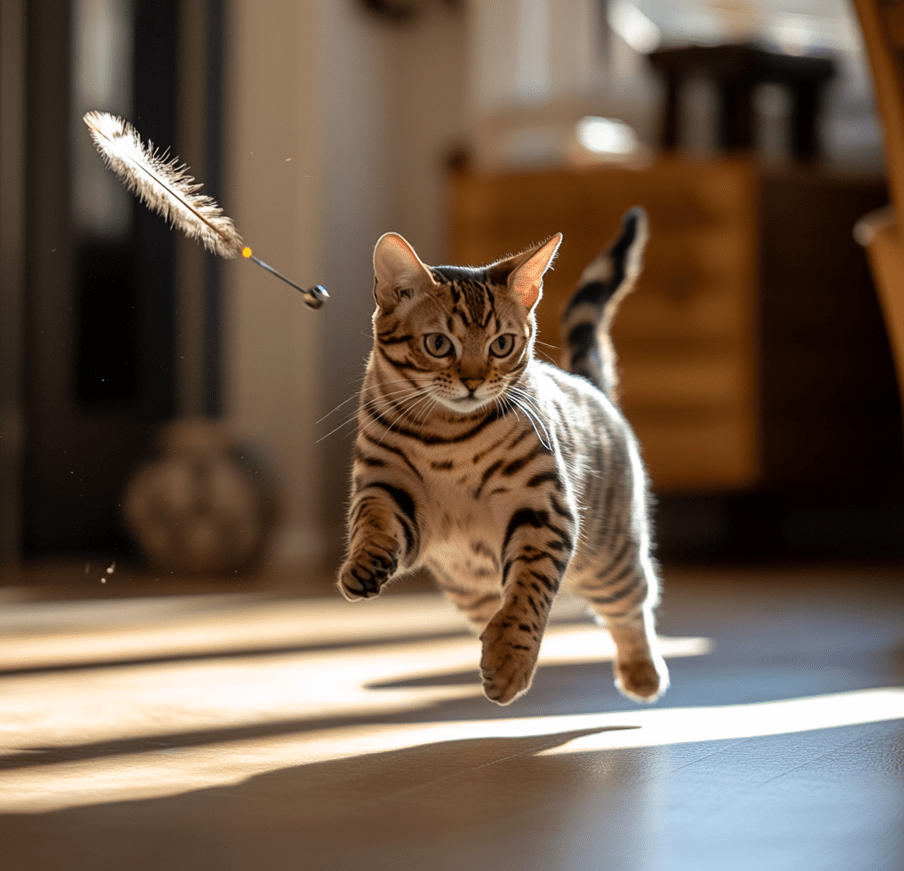
1. Dietary Issues
Bengals are obligate carnivores, meaning they need a diet rich in high-quality animal protein. If your cat isn’t getting enough calories or nutrients, weight loss can occur. Common dietary issues include:
Inadequate Food Intake: Your Bengal may not be eating enough due to picky eating habits, poor-quality food, or competition with other pets.
Low-Quality Diet: Foods with fillers like grains or artificial additives may not meet a Bengal’s nutritional needs.
Changes in Diet: Switching to a new food brand or type (e.g., from wet to dry food) can cause temporary appetite changes, leading to weight loss.
Actionable Tip: Ensure your Bengal’s diet is high in protein and tailored to their needs. Consult your vet to determine the right portion sizes and food type (wet, dry, or raw). Gradually transition to new foods over 7–10 days to avoid digestive upset.
2. Dental Problems
Dental issues, such as gingivitis, tooth decay, or oral infections, can make eating painful for your Bengal, leading to reduced food intake and weight loss. Bengals are prone to dental diseases, especially as they age.
Signs to Watch For:
1.Bad breath
2.Drooling
3.Difficulty chewing
4.Swollen or bleeding gums
Actionable Tip: Schedule regular dental checkups with your vet. Brush your Bengal’s teeth with pet-safe toothpaste and provide dental treats to promote oral health.
3. Parasites
Intestinal parasites, such as roundworms, tapeworms, or giardia, can cause weight loss by stealing nutrients from your cat’s body. Bengals that spend time outdoors or eat raw diets are at higher risk.
Signs to Watch For:
1.Diarrhea or vomiting
2.Visible worms in stool
3.Bloated abdomen
Actionable Tip: Have your vet perform a fecal exam to check for parasites. Administer regular deworming treatments as recommended, especially for outdoor Bengals.
4. Hyperthyroidism
Hyperthyroidism is a common condition in older cats, including Bengals, caused by an overactive thyroid gland. It increases metabolism, leading to weight loss despite a normal or increased appetite.
Signs to Watch For:
1.Increased appetite
2.Excessive thirst and urination
3.Restlessness or hyperactivity
4.Poor coat condition
Actionable Tip: If your Bengal is over 7 years old and showing these signs, request a blood test to check thyroid levels. Treatment options include medication, radioactive iodine therapy, or surgery.
5. Diabetes
Feline diabetes can cause weight loss due to the body’s inability to use glucose effectively. Bengals with diabetes may lose weight even if they’re eating well.
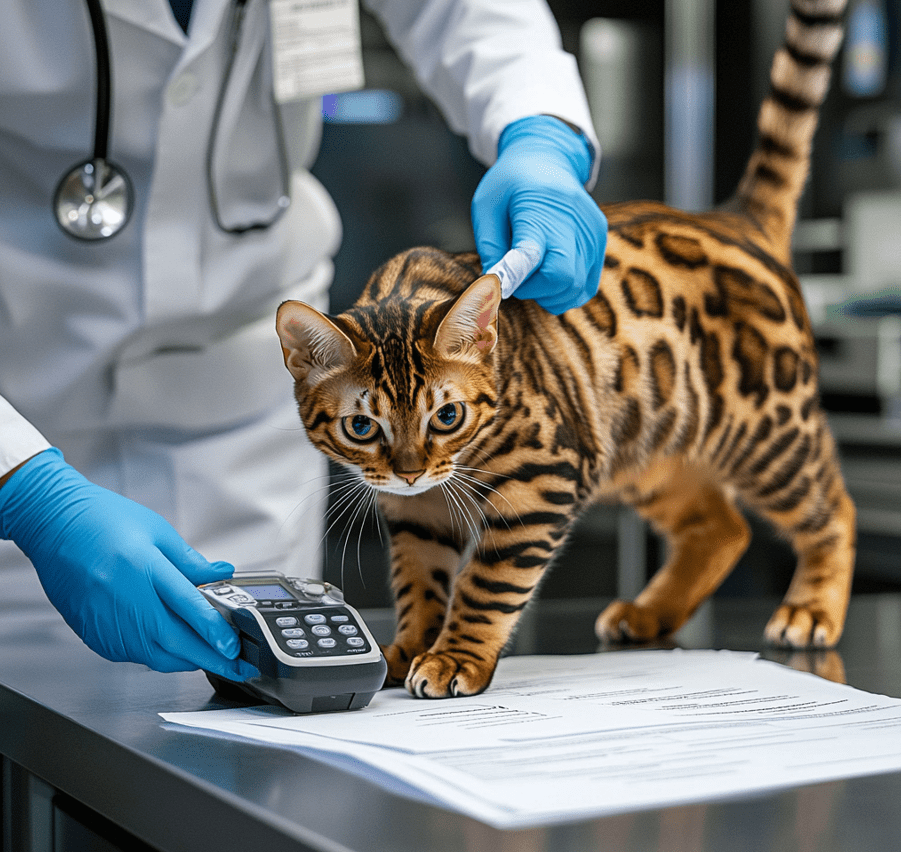
Signs to Watch For:
1.Increased thirst and urination
2.Lethargy
3.Increased appetite (early stages)
4.Sweet-smelling breath
Actionable Tip: A vet can diagnose diabetes with blood and urine tests. Treatment may involve insulin injections, dietary changes, and regular monitoring.
6. Gastrointestinal Disorders
Conditions like inflammatory bowel disease (IBD), pancreatitis, or food allergies can interfere with nutrient absorption, leading to weight loss. Bengals with sensitive stomachs may be more prone to these issues.
Signs to Watch For:
1.Chronic vomiting or diarrhea
2.Loss of appetite
3.Abdominal pain
Actionable Tip: Work with your vet to identify food sensitivities or underlying GI issues. A hypoallergenic or prescription diet may help manage symptoms.
7. Cancer
While it’s a difficult topic, cancer, such as lymphoma or intestinal tumors, can cause weight loss in Bengal cats. This is more common in older cats but can occur at any age.
Signs to Watch For:
1.Lumps or bumps
2.Lethargy
3.Loss of appetite
4.Unexplained bleeding
Actionable Tip: Early detection is key. If you notice unusual symptoms, schedule a vet visit for diagnostic tests like bloodwork, ultrasounds, or biopsies.
8. Stress or Anxiety
Bengals are highly intelligent and sensitive cats. Changes in their environment, such as moving, new pets, or loud noises, can cause stress, leading to reduced appetite and weight loss.
Signs to Watch For:
1.Hiding or aggression
2.Excessive grooming
3.Changes in litter box habits
Actionable Tip: Create a calm environment with plenty of enrichment, like toys, climbing trees, and interactive play. Consider pheromone diffusers or consult a vet for anti-anxiety solutions.
9. Kidney Disease
Chronic kidney disease (CKD) is common in older Bengals and can lead to weight loss due to reduced appetite and nutrient loss.
Signs to Watch For:
1.Increased thirst and urination
2.Vomiting
3.Lethargy
4.Poor coat quality
Actionable Tip: Regular bloodwork can detect kidney issues early. A vet may recommend a kidney-friendly diet and fluid therapy to manage symptoms.
10. Infections or Viruses
Feline immunodeficiency virus (FIV), feline leukemia virus (FeLV), or bacterial infections can weaken your Bengal’s immune system, leading to weight loss.
Signs to Watch For:
1.Fever
2.Lethargy
3.Recurrent infections
Actionable Tip: Keep your Bengal’s vaccinations up to date and avoid contact with untested cats. Blood tests can diagnose viral infections.
When to Worry About Your Bengal Cat’s Weight Loss
Not all weight loss requires immediate panic, but certain signs indicate it’s time to consult a veterinarian. Contact your vet if your Bengal:
1.Loses more than 10% of their body weight in a short period (e.g., 1–2 months).
2.Shows a sudden or drastic decrease in appetite.
3.Exhibits symptoms like vomiting, diarrhea, lethargy, or changes in behavior.
4.Has a dull coat, excessive thirst, or unusual litter box habits.
How Vets Diagnose Weight Loss in Bengals
Your vet will likely perform a combination of the following to determine the cause of weight loss:
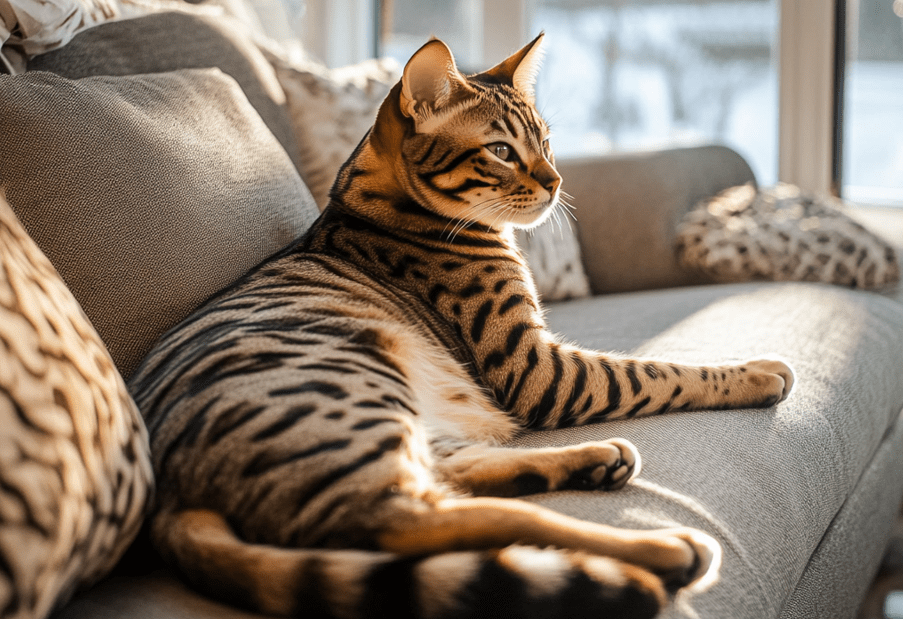
Physical Exam: Checking for lumps, dental issues, or signs of dehydration.
Bloodwork and Urinalysis: To assess organ function, thyroid levels, and signs of infection.
Fecal Exam: To detect parasites.
Imaging: X-rays or ultrasounds to check for tumors or organ abnormalities.
Biopsy: If cancer or other serious conditions are suspected.
Preventing Weight Loss in Bengal Cats
Prevention is always better than treatment. Here are proactive steps to keep your Bengal at a healthy weight:
1. Feed a High-Quality Diet
Choose a diet rich in animal-based protein and low in fillers. Bengals often thrive on wet food, which supports hydration and urinary health. Consult your vet to determine the right calorie intake based on your cat’s age, weight, and activity level.
2. Monitor Food Intake
Track how much your Bengal eats daily. Use a measuring cup for dry food and follow feeding guidelines. If you have multiple cats, feed them separately to prevent food competition.
3. Schedule Regular Vet Checkups
Annual or biannual vet visits can catch health issues early, especially for senior Bengals (7+ years). Routine bloodwork and dental exams are essential.
4. Provide Enrichment
Bengals need mental and physical stimulation. Offer interactive toys, puzzle feeders, and climbing structures to reduce stress and encourage appetite.
5. Maintain a Stable Environment
Minimize sudden changes in your Bengal’s routine or surroundings. Introduce new pets or changes gradually to avoid stress-related weight loss.
Supporting a Bengal Cat with Weight Loss
If your Bengal is losing weight due to a diagnosed condition, follow your vet’s treatment plan. Here are additional tips to support recovery:
Increase Calorie Intake: Offer high-calorie, nutrient-dense foods or supplements as recommended by your vet.
Encourage Eating: Warm up wet food or add low-sodium broth to make meals more appealing.
Monitor Progress: Weigh your Bengal weekly and track changes. Share this data with your vet to adjust treatment as needed.
Provide a Stress-Free Space: Ensure your cat has a quiet, safe area to eat and rest.
Conclusion
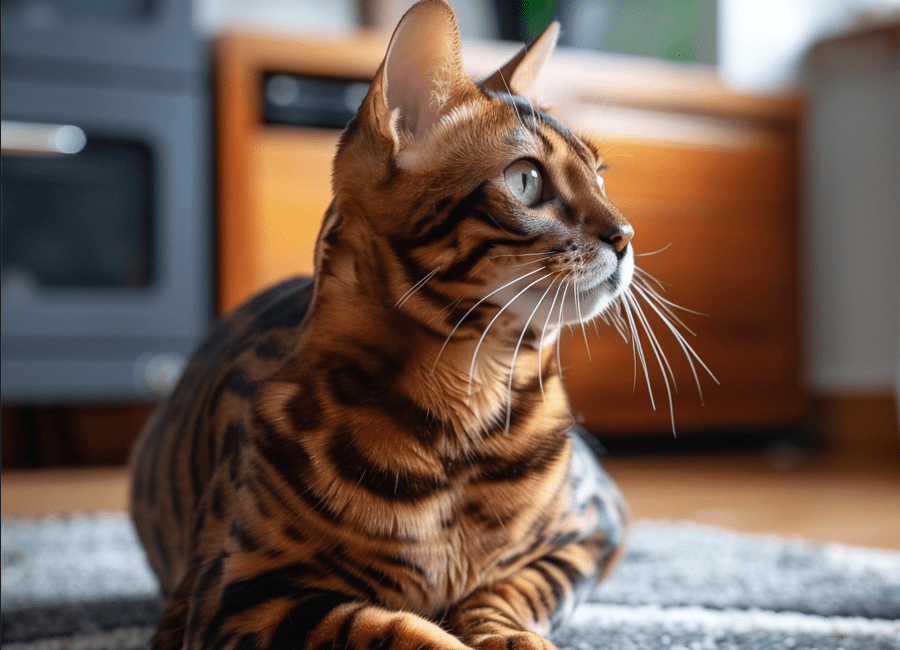
Weight loss in Bengal cats can stem from various causes, from dietary issues to serious medical conditions like hyperthyroidism or cancer. By monitoring your Bengal’s weight, behavior, and appetite, you can catch potential problems early. Regular vet checkups, a high-quality diet, and a stimulating environment are key to keeping your Bengal healthy and at an ideal weight. If you notice sudden or unexplained weight loss, don’t hesitate to consult your veterinarian for a thorough evaluation. With the right care, your Bengal can thrive and continue to bring joy to your life.
This guide aims to empower Bengal cat owners with the knowledge to recognize and address weight loss effectively. By staying proactive and informed, you can ensure your feline companion enjoys a long, healthy, and happy life.

